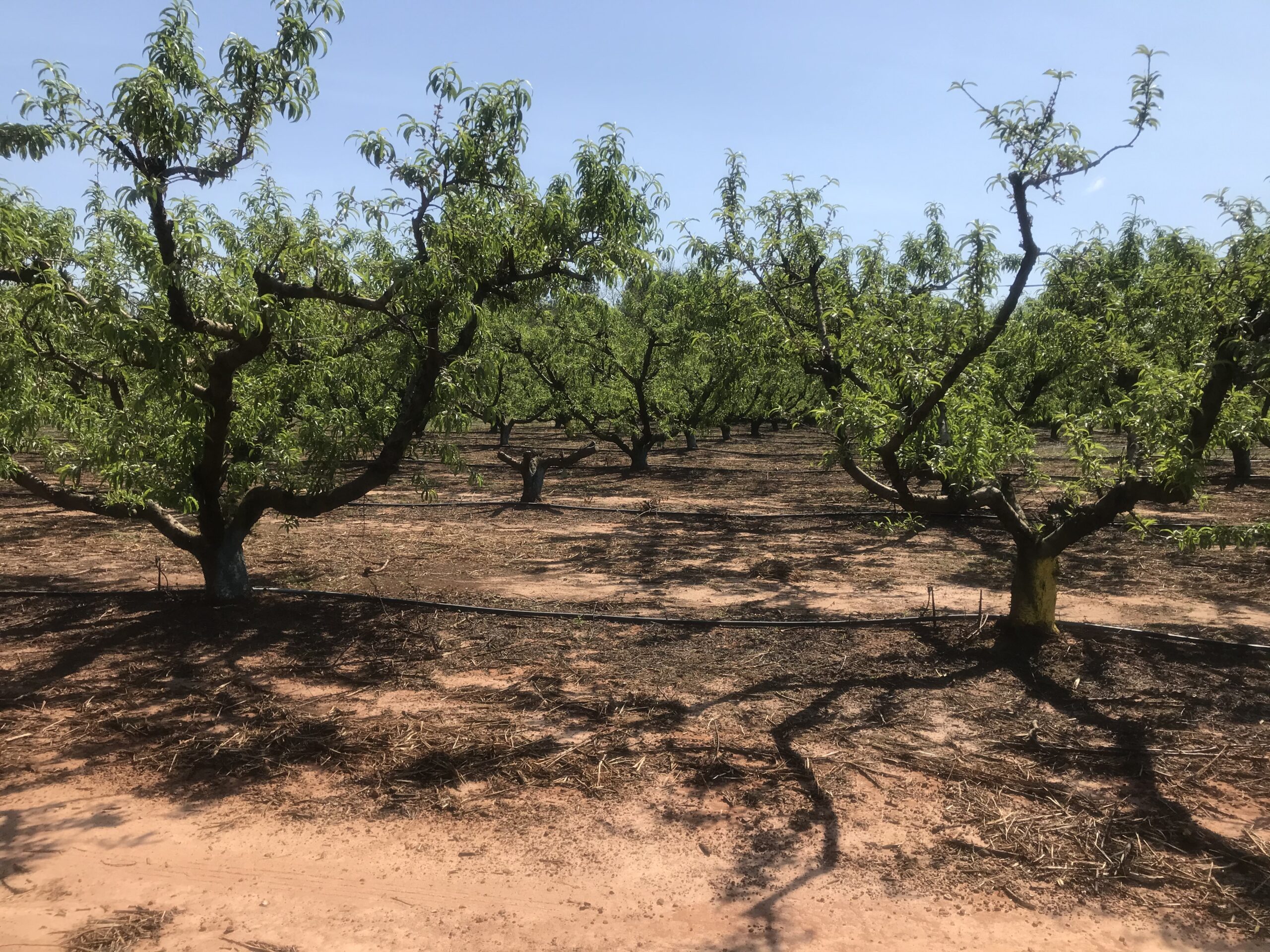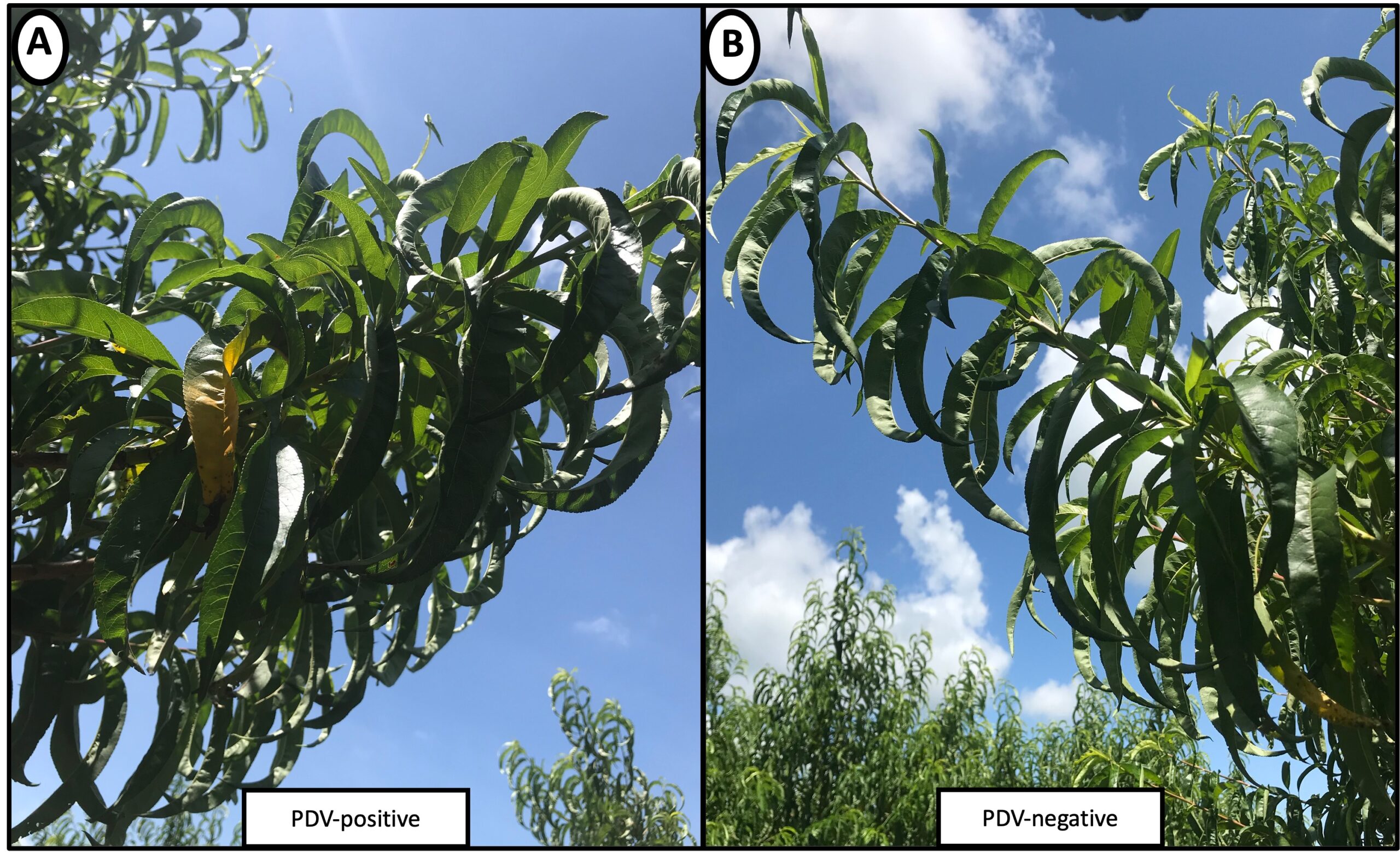There are numerous viruses known to infect peach, although only a few cause disease problems. Virus symptomatology is complicated by differences among cultivars and rootstocks, virus strains, and mixed infections of multiple viruses. The viruses of major concern in the Southeast are prune dwarf virus, Prunus necrotic ringspot virus, and peach latent mosaic viroid. Plum pox virus has never been detected in this region, but the CCPC and state departments of agriculture continue to test for PPV to remain vigilant. All of these pathogens are transmitted efficiently through grafting and vegetative propagation, and some of them are transmitted by other mechanisms as well.
Prunus necrotic ringspot virus (PNRSV) is an ilarvirus that is transmitted vertically (parent-progeny) through seed and horizontally (tree to tree) through pollen. PNRSV can cause severe stunting in young trees (see photo of young trees, infected trees in the foreground) and defoliate and weaken mature trees (see photo of mature trees, infected one on right). PNRSV is commonly detected in orchards in the southeastern U.S. In mixed infections with prune dwarf virus, it can cause peach stunt disease.


Prune dwarf virus (PDV) is also an ilarvirus that is transmitted vertically (parent-progeny) through seed and horizontally (tree to tree) through pollen. PDV is found less frequently than PNRSV, but it can cause shortened internodes and tree stunting.

Peach latent mosaic viroid (PLMVd) is a viroid, which is a small, circular, infectious molecule of naked RNA. PLMVd is highly stable and is one of the few fruit tree pathogens that is transmitted mechanically from tree to tree on equipment. There is evidence that PLMVd can also be transmitted by aphids and through pollen, although it is not seed-transmitted. PLMVd causes delays in bloom (see photo, infected tree on right compared to PLMVd-negative tree which has already dropped petals), and malformed sutures on fruit.



Xylella fastidiosa is a xylem-dwelling bacterial pathogen that affects numerous fruit crops. In peach it causes phony peach disease. This disease is problematic in Georgia and in some parts of South Carolina. It is characterized by shortened internodes and darker green foliage. It is transmitted by sharpshooter leafhoppers and spittlebugs.

